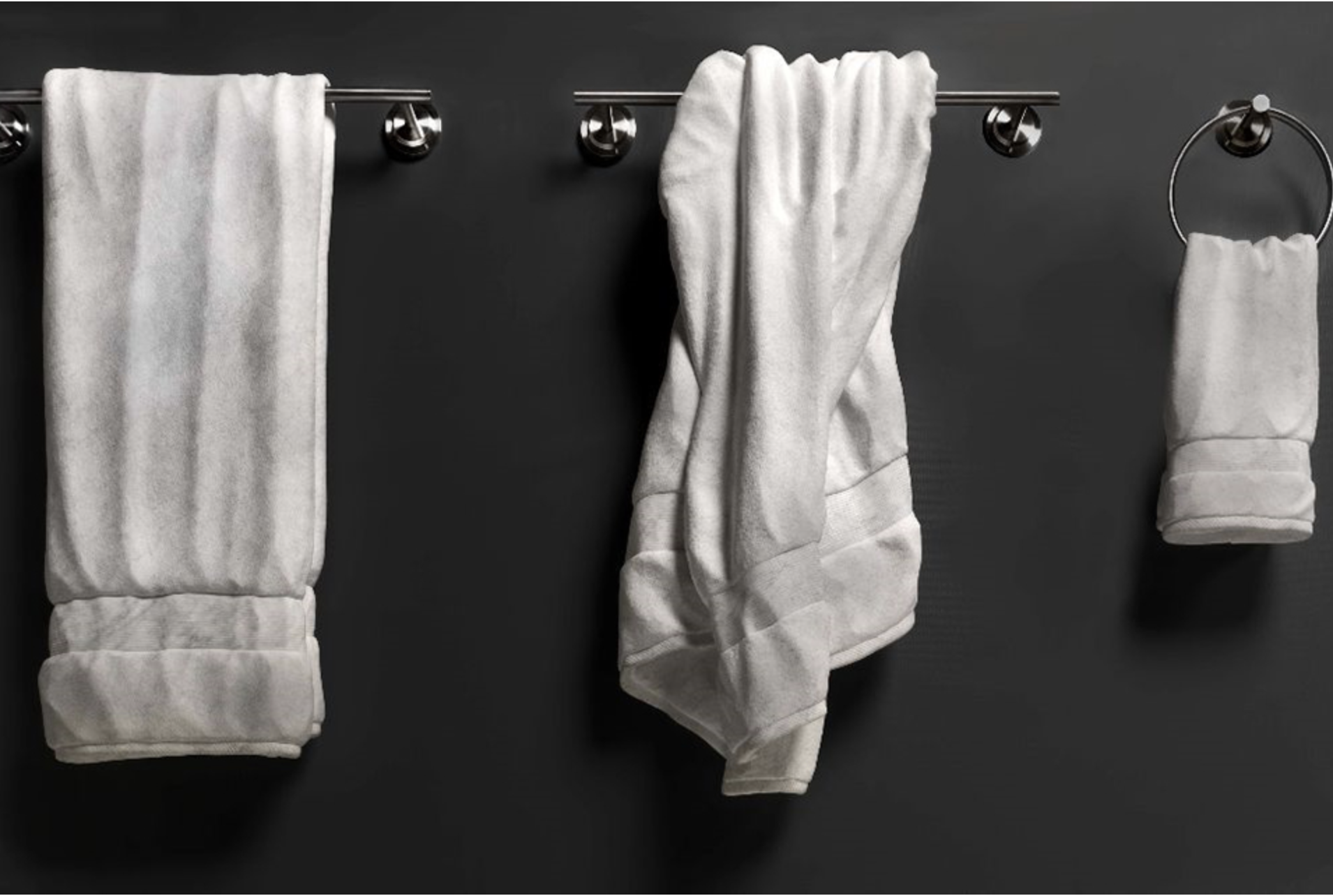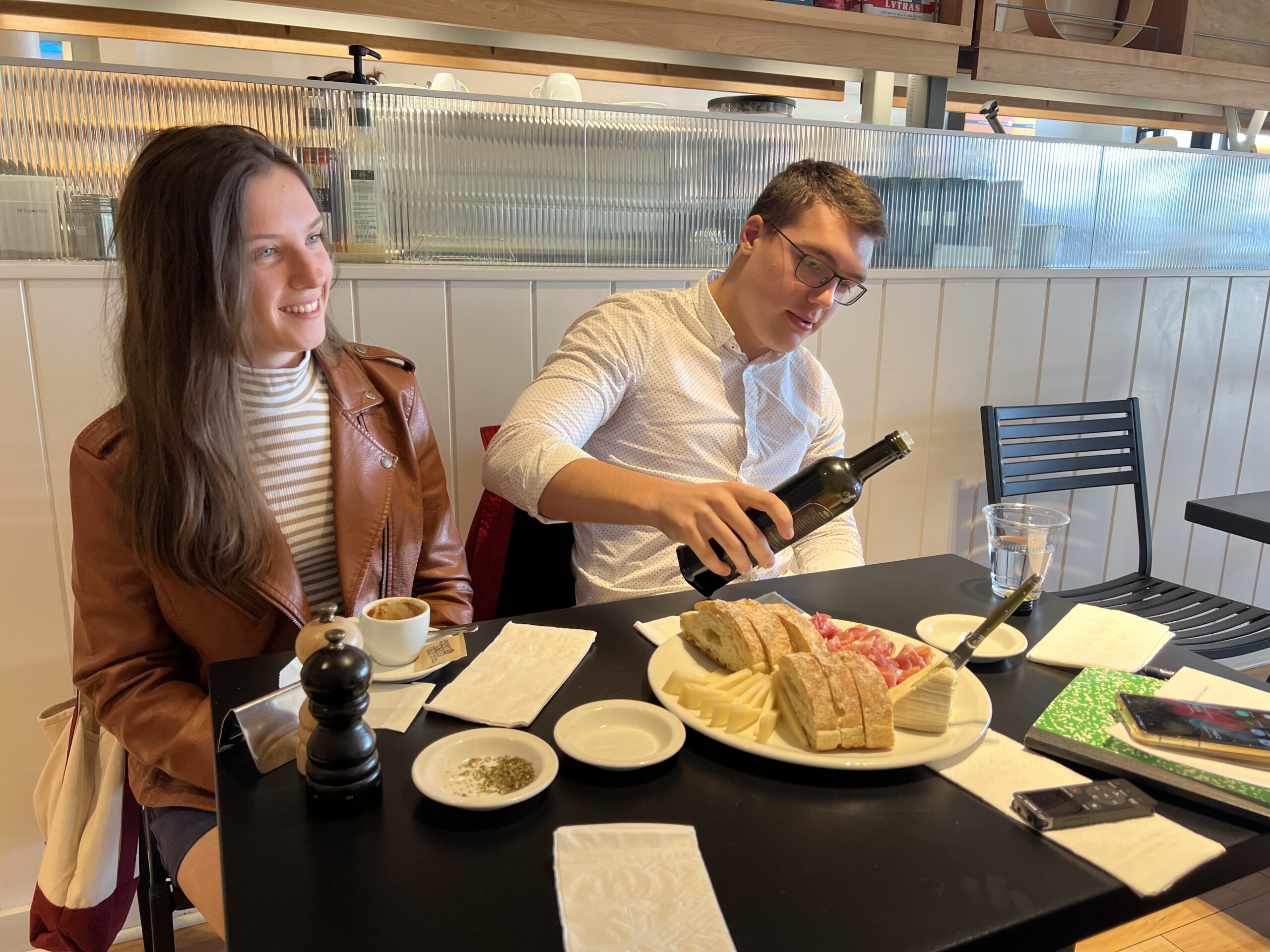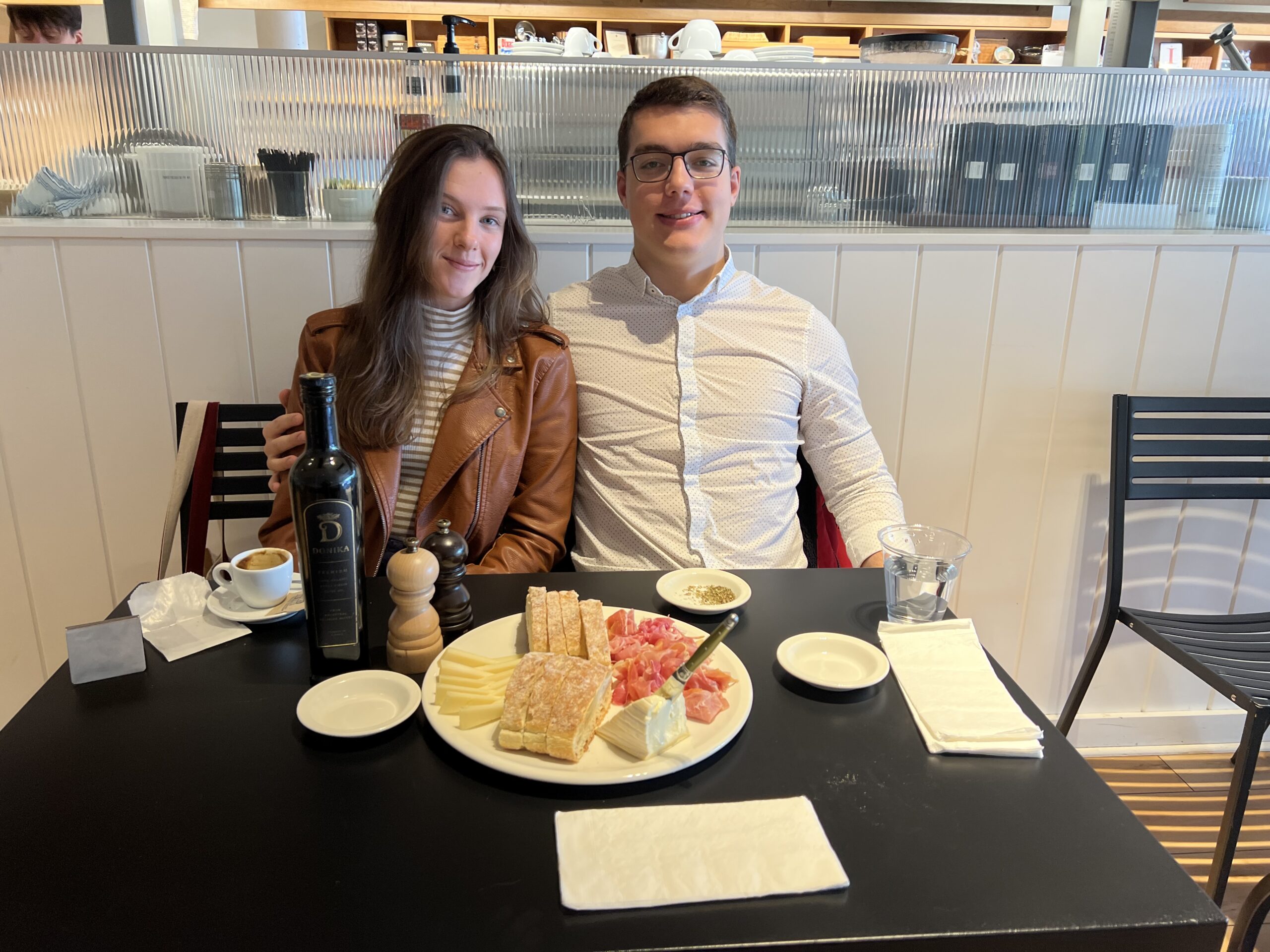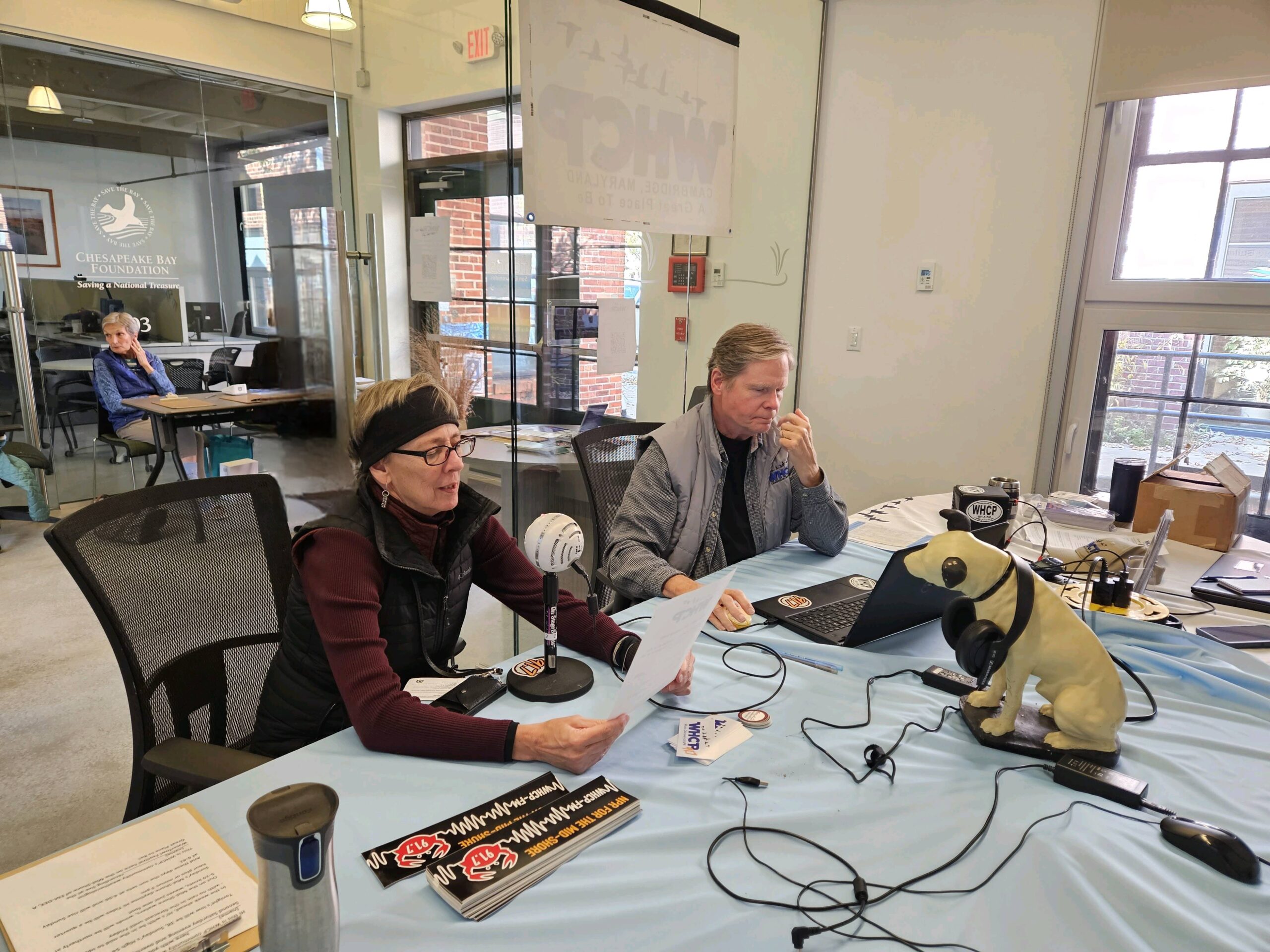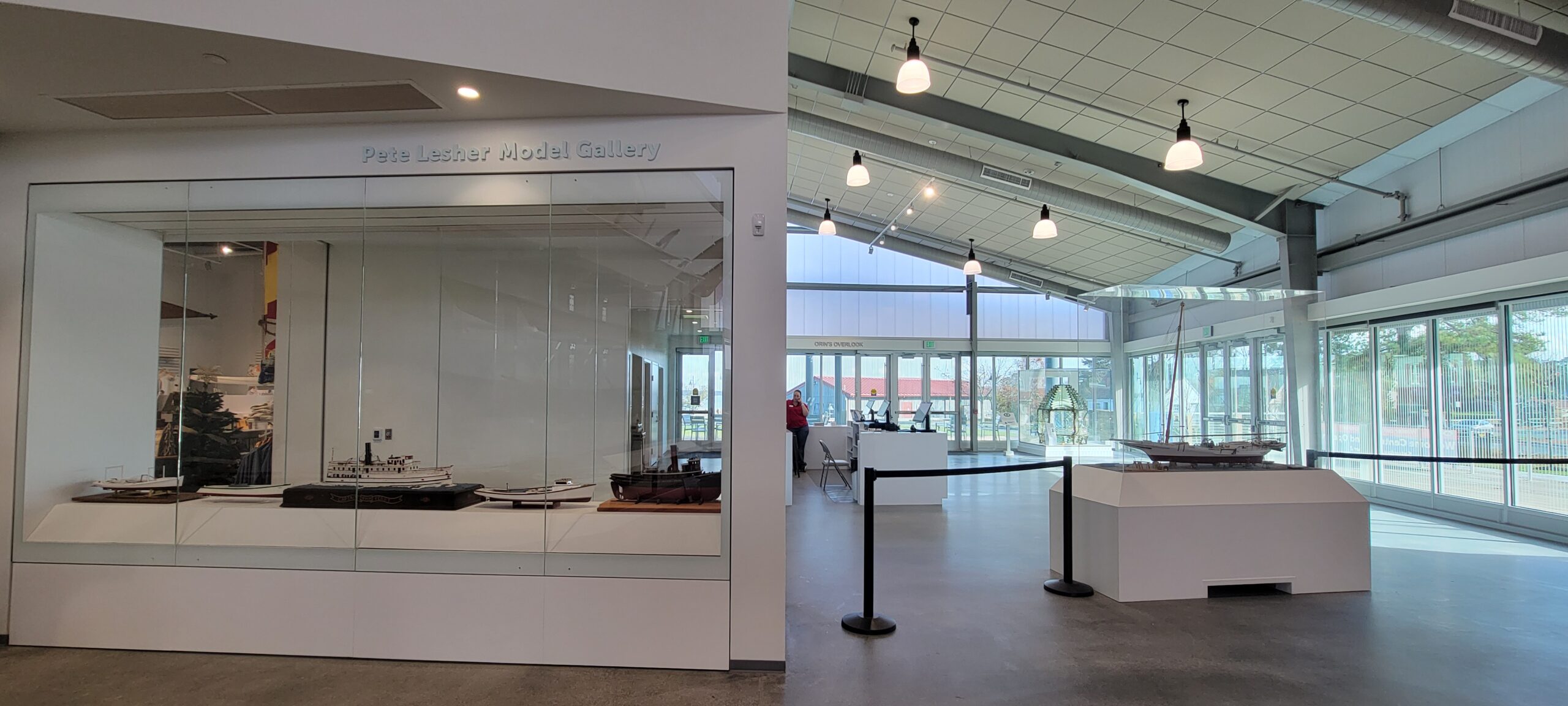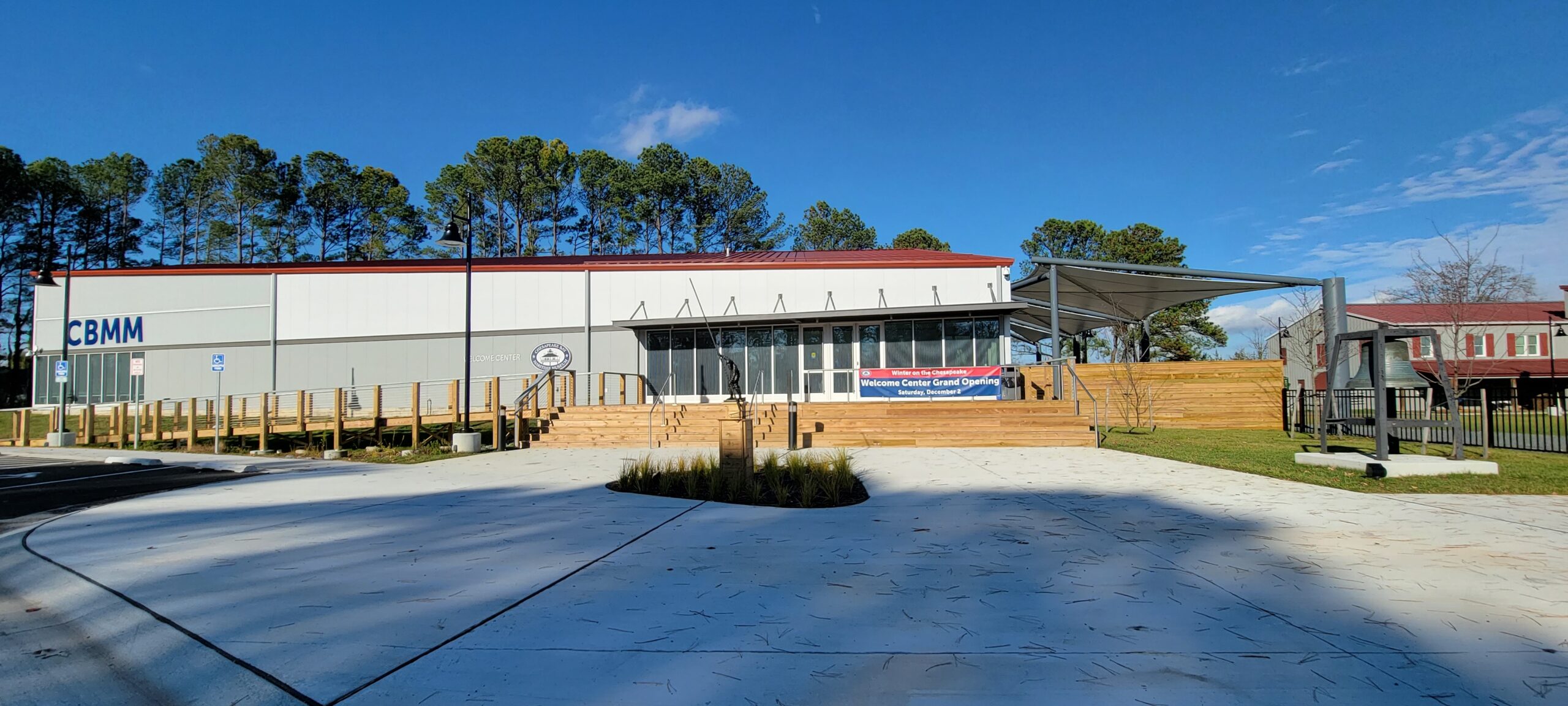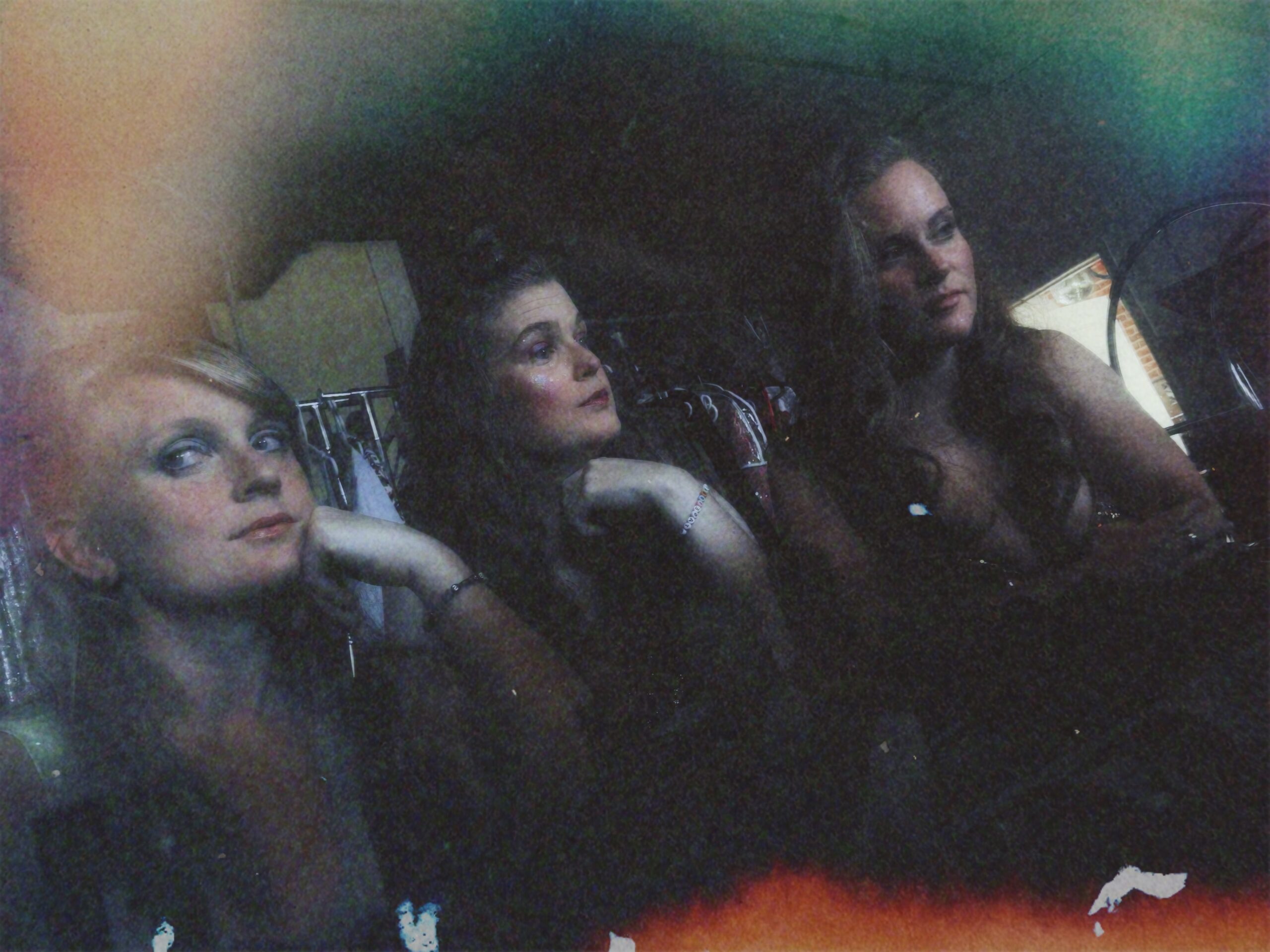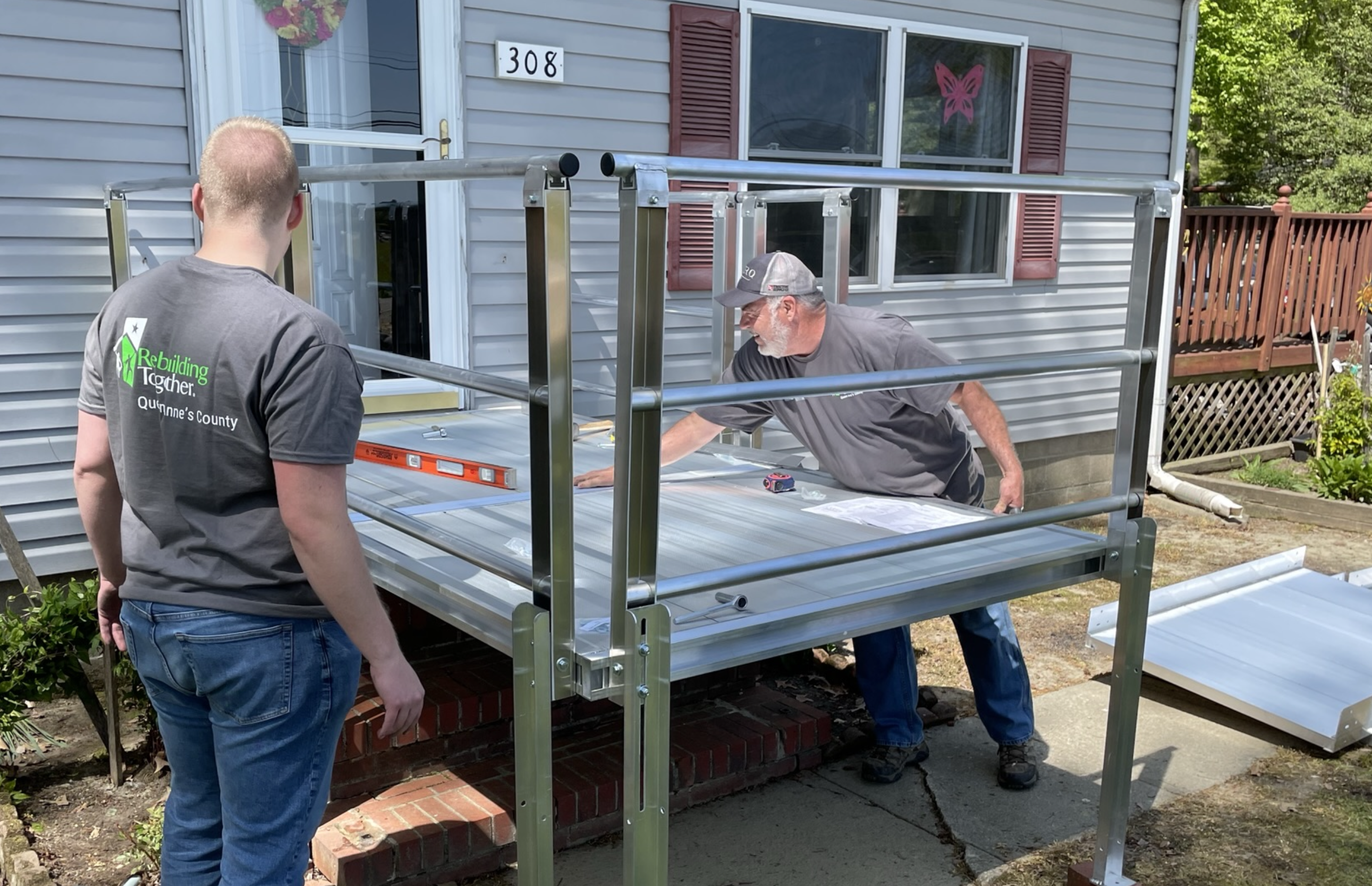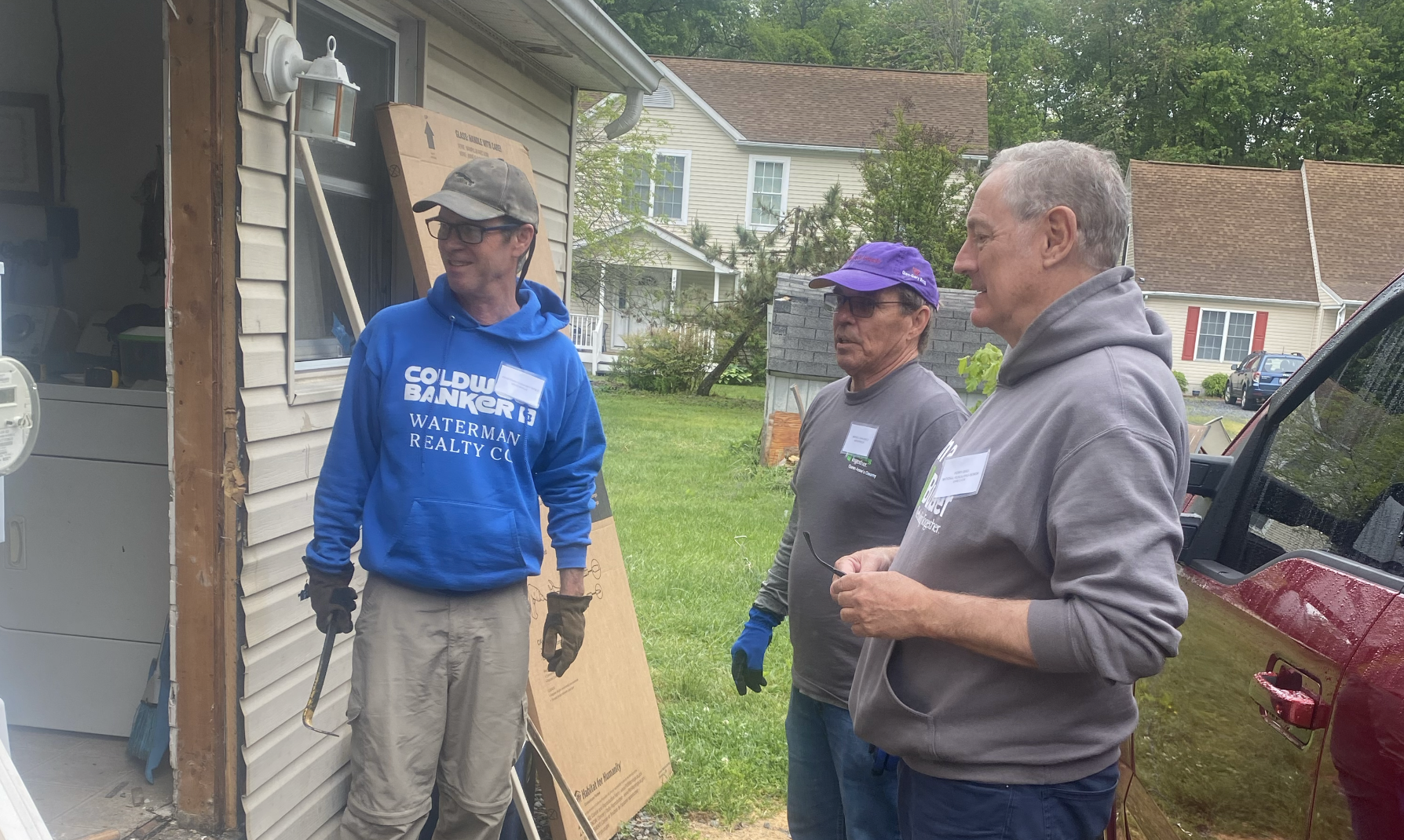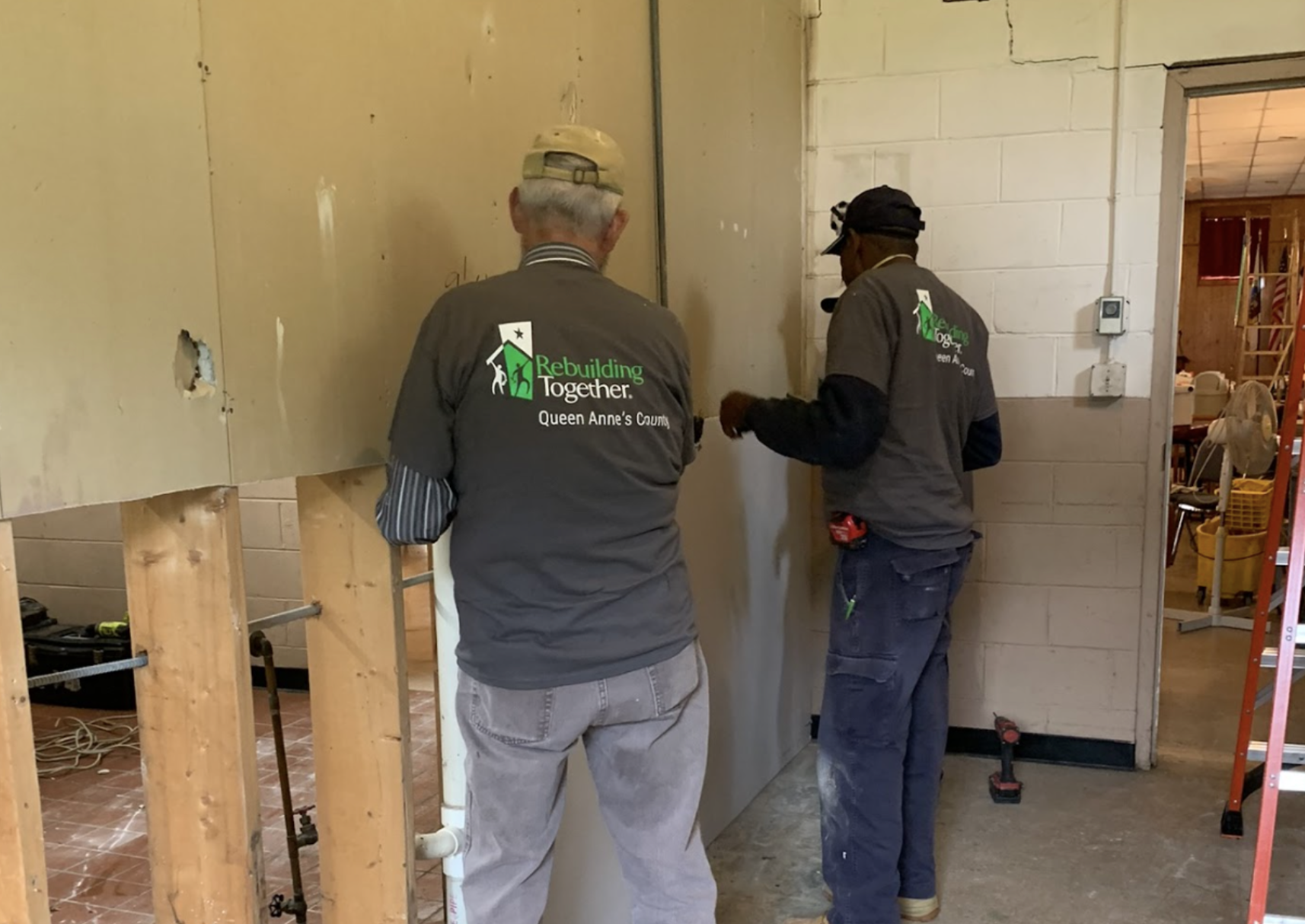
Louise Edwards of Antigua, Kiara Brummell from The Water’s Edge Museum, in conversation with Queen Camilla
Getting caught up in the enthusiasm and passion of the people associated with Oxford’s Water’s Edge Museum is inevitable. But there is a good reason for their recent excitement. They are witnessing the Museum becoming a bridge between our Eastern Shore and the faraway Caribbean island of Antigua and Barbuda. And the key to this bridge? Tiny, beautiful seeds.
It’s all about seedwork, an intricate art form that originated with enslaved African women brought to the islands. Wild tamarind and jumbie bead seeds are picked and then boiled for hours. Some are paired with African beads and then hand-stitched to create beautiful and intricately patterned jewelry, belts, mats, and purses. Besides providing income for these artists, their harvest also helps protect the island’s ecosystem since both seeds are considered invasive species. Beyond being visually captivating, these creations also carry deep symbolic significance to their creators.

Now, here is where that bridge comes in: Seedwork has been found in a plantation home in Caroline County. Since the Eastern Shore has been one of the places where enslaved people disembarked, this is a vital link–it isn’t just some foreign art form; it’s woven into the very fabric of our shared history and heritage. And preserving it isn’t just about honoring the past, it’s about reclaiming a piece of this area’s identity.
But the clock is ticking. With only five aging master seed artists left, this unique legacy hangs by a thread.
That urgency has compelled Barbara Paca, founder of the Water’s Edge Museum and Cultural Envoy to Antigua and Barbuda, to lead preservation efforts. Museum Director Monica Davis and intern Kiara Brummell are joining forces in her mission. “The challenge,” said Davis, “is how to keep this intangible culture alive, prosperous, and doing well. How do we create a story and a platform for people to want to keep it alive?”
One way was to start talking about it, exposing this art to others. During the Juneteenth celebration in Easton last year, the Museum introduced seedwork to the public, selling around 50 pieces and initiating a dialogue about the art’s significance.
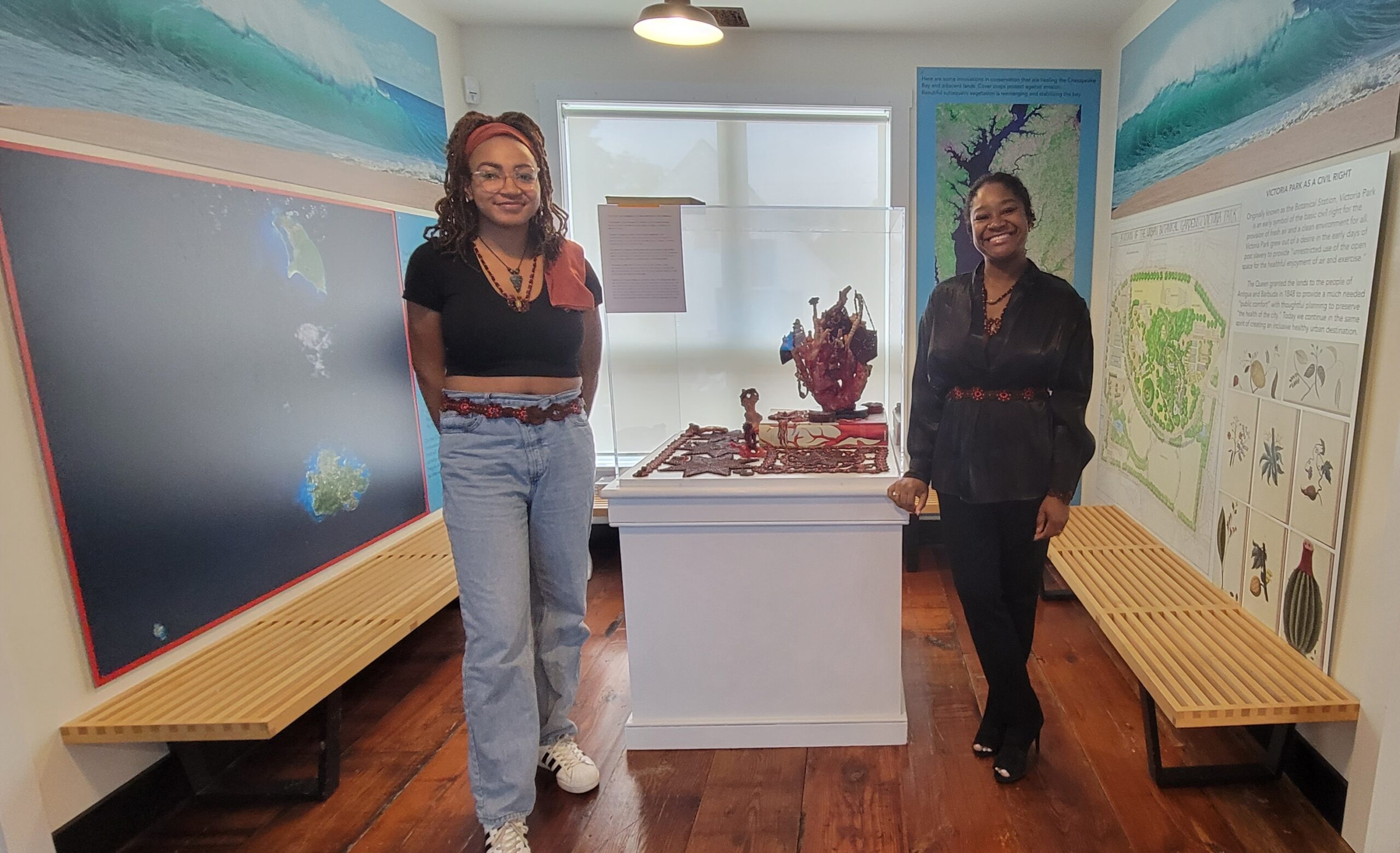
Kiara Brummell and Monica Davis
The Museum currently features examples of the elaborate craftsmanship that’s involved. But it offers more than just showing off the art. Wander through the Museum, and you’ll also be able to connect the dots and understand the history of the connection to our Shores.
It also helps that Paca was introduced to Anne Jonas, Secretary to the Governor General of Antigua and Barbuda. Together, they’ve come up with ways to expose these creations. They also recently applied for funding to expand free workshops to teach seed art. Jonas is also known for creating Botanique Studios, which is dedicated to generating economic opportunities for seedworkers, helping to keep seedwork part of contemporary conversations. She also showcases products on social media.
And the media began to pay attention with articles about the seedwork initiatives. Here is where this small art form takes a more global turn.
In addition to her influential role, Paca recently launched an exhibit at the Garden Museum in Central London in honor of Antiguan artist and environmentalist Frank Walter. As part of the larger exhibition, she funded a companion exhibition exploring Antiguan seedwork and other crafts unique to the island.
Which brings up Queen Camilla of England.
Since the Queen was going to be touring the Frank Walter exhibition, it also became the perfect opportunity to introduce her to the artistry of seedwork. And who better to do so than the women so intrinsically involved in this program? So Paca privately funded the airfare, accommodations, and related expenses from Antigua/Maryland to London for five people for a 6-day holiday fair, leading symposia and seminars on seedwork in December. The delegation included: From Antigua–Anne Jonas, Louise Edwards, the oldest seedwork artisan, and Mosia Challenger, artisan craft person, and from Maryland–Monica Davis and Kiara Brummell,

Mosia Challenger from Government House, Antigua, with Her Majesty Queen Camilla
On the day scheduled for the tour, Paca personally guided the Queen through the Walter exhibition and then presented the delegation of women from Maryland and Antigua who shared with Her Majesty the story of the seedwork and how it has miraculously survived as an art form since the time of the first arrival of enslaved Africans disembarking on the islands of Antigua and Barbuda.
“The Queen was fascinated by the work,” said Paca, “handling it gently while asking many good questions. This led to a lively conversation about the importance of arts and crafts in establishing identities that uplift and empower youth. The Queen recognized the integrity, sense of mission, and sheer beauty of the artworks they are working to preserve.”
At the end of the tour, Edwards, an artist for the past 50 years, decided she needed to have a final word. “She looked directly at the Queen,” said Paca, “and asked her to please help to teach children about seedwork, culture, and heritage. Smiling, Queen Camilla nodded in solidarity, and everyone felt the commitment that marked the high point of the tour.”
Queen Camilla’s visit has helped validate the seed artists’ cultural contributions on the global stage. However, the real work goes far beyond one royal meeting. It will require ongoing effort to educate, motivate, and inspire youth to carry on this living legacy. With culture-bearers like Louise Edwards soon retiring from their craft, it is imperative that seedworking’s light must not be extinguished.
One way to prevent that is on a more local level. Water’s Edge Museum plans to partner with the Harriet Tubman Underground RR Museum, bringing seedwork to summer camps, teaching kids the craft, and showing how this art connects them to their history.
It’s something that resonates with Brummell. The 19-year-old was initially hesitant to take on a public-facing role due to anxiety about speaking to groups. Besides, she wanted to move out of the area. But in discovering her regional heritage, something happened she didn’t expect. “I took this area for granted, and couldn’t wait to get out of here. But after learning more about my history, I’m so proud to be part of the Eastern Shore. The seedwork is very symbolic, in reference to the strength, the sorrows, and just the resilience of that culture and their heritage. So I hope that once people understand that aspect, they’ll want to keep this tradition alive.” Even more than that, she said, she considers herself a ‘history geek.’ “The thought of anybody’s history getting washed away is gut-wrenching to me.” The surprising personal impact gave her the voice she thought she didn’t have, as she now helps run museum tours. She even got to speak to the Queen.
Also next up is developing an affordable line of seedwork, ensuring accessibility to a broader audience. “The women who make these are not in it for the money,” said Davis. “It’s part of their passion and something that’s been passed on generation after generation. The money is to keep their journey going.”

Rupert Tyler Chair Garden Museum Trustees, Queen Camilla, Barbara Paca
This brings up one additional important aspect of this story and it has to do with money made for selling the seedwork. “It goes back to Ann Jonas,” said Davis, “who uses it to teach the younger generations about the culture and heritage. The idea of purchasing this work is to promote this international connection between the Caribbean Islands and the Eastern Shore, which is amazing. Like mind-blowing!”
So you can understand their passion. Barbara Paca perhaps said it best after returning from London: “The trip reinforced the shared intention among The Water’s Edge and Bellevue Passage museums, Oxford’s Middle Passage Port Marker and Black-owned/women-owned/Afro-Caribbean-owned ventures supporting intangible cultural heritage–and in this fashion, the arts are expanding onto a broader global platform. It is with happiness and a willingness to do the hard work that we collaborate to celebrate the excellence of all we share among other cultures. For all of us, this effort will become a component of education in the schools in 2024.”
Pretty cool, right?
To view the seedwork, visit botaniquestudios.com. Better still, see it in person at Water’s Edge Museum, 101 Mills St., Oxford



